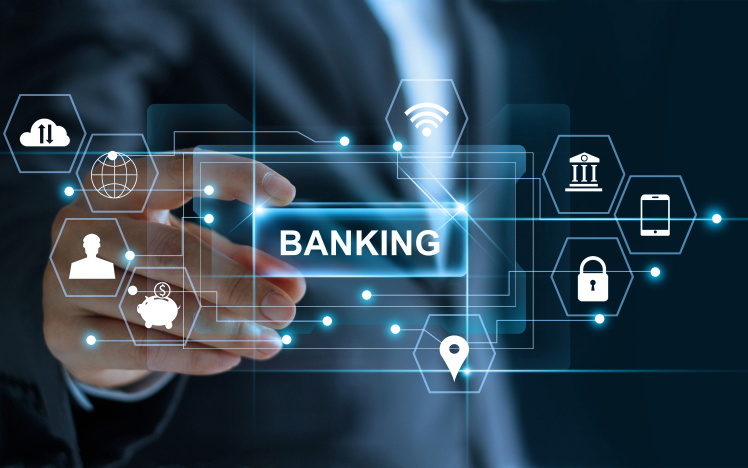Digital Banking: Teller Transactions Down -10%, Remote Deposits Up +25%
The San Diego Business Journal asked a group of banking leaders for their impressions of the digital revolution in banking, and received valuable insights regarding human interactions, response to pandemic-era restrictions, and fraud prevention.
Even before the COVID-19 pandemic impacted the world economy in early 2020, the financial sector was developing and deploying digital tools that would make banking faster, safer and more convenient for businesses. Through the pandemic lockdowns, commercial banks accelerated investments into their digital service offerings – and have continued to do so in the post-vaccine reopening of the economy.

Digital: Once a Great Idea, Now a Crucial Component
The article boasts a distinguished group banking leaders, including:
- Aaron Ryan, Executive Director for Middle Market Banking, JPMorgan Chase
- Alan Prohaska, Regional President and Head of Corporate Banking, PNC
- Jeff Friesen, President of the Southwest Region, Enterprise Bank & Trust
- Nathan Rogge, President and CEO, Friendly Hills Bank
- Cliff Cho, Senior Vice President and Market Executive, Bank of America
- Kris Ilkov, Executive Vice President and Southwest Regional Director, Umpqua Bank
- Manuel Rodriguez, Commercial Banking Market President, U.S. Bank
- Chris Grassa, Senior Managing Director of Commercial Banking, Torrey Pines Bank
The consensus of the group is that digital has become a crucial component in banking. JPMorgan Chase Executive Director for Middle Market Banking Aaron Ryan sees “an opportunity to solve a real set of pain points” for clients by taking “a digital-first mindset.”
“Using client-centric design, we have worked to deliver personalized, data-driven solutions enabling our clients to achieve their goals and have an enhanced client experience,” he said. “We’re currently seeing that local businesses are building on digital banking solutions implemented during COVID and continuing to look for digital banking tools and services that automate processes and make their work life easier, making it imperative for us to seek better ways to serve clients through continuous innovation.”

Alan Prohaska, regional president and head of corporate banking for PNC in San Diego, noted that the move to digital was already underway before the pandemic accelerated adoption -- driven by a desire to reduce paper and streamline processes.
“However, many were accustomed to old workflows, and the human intervention and interaction involved with these processes, so adoption rates of new technology were lower,” he said. “The pandemic and disruptions in the labor market have accelerated the adoption of more sophisticated treasury automation tools, helping businesses operate more efficiently and reducing human errors.”
Jeff Friesen, president of the southwest region at Enterprise Bank & Trust, also noted that digital adoption was already underway, but greatly accelerated when the pandemic hit and branches closed.
"In 2020, our number of online banking users increased 12%, business remote deposits increased 25%, and the number of wire transfers increased 40%.”
Investment in Technology
As noted in an article from Modernizing Fraud with AI, many banking leaders are hesitant to integrate new technology due to the perceived complexities.
But, many leaders also understand that it is a necessity.
Cliff Cho, senior vice president and market executive for Bank of America in San Diego, notes that digital technology has always been a priority for his organization.
“One of our key investments every year is digital technology, to keep us on the forefront. Over the past 12 years, the bank has dedicated more than $35 billion to tech spending, and in 2022 alone has set aside $3.6 billion to continue those efforts.”

Friendly Hills Bank President and CEO Nathan Rogge identifies fraud, risk, and cybersecurity as top concerns for banks in the digital era -- requiring investment.
“The rise in digitals tools has forced banks to make a large investment in technology."
Modernizing Check Deposits
Technology has been key in streamlining many deposit channels for checks. Mr. Friesen explained that, while remote deposit was already being utilized by consumers, the pandemic "helped push further adoption of things like online banking, remote deposit and wires," with business remote deposits seeing a 25% increase.
However, the article points to data from a recent Chase Small Business Pulse Survey that shows:
- 83% of small business owners say being easy to work with is an important attribute in a financial services partner
- 82% want easy-to-use online platforms
- 81% want easy-to-contact live support
Mr. Rogge reaffirms the need for branches, especially when it comes to retailers with heavy cash flow, as they still frequent branches to make deposits. This is why banks are looking towards technologies like AI and machine learning to modernize traditional payment channels like checks -- providing a seamless and consistent experience from digital to in-person.
As banks look to maintain relationships while providing a "frictionless experience," we will continue to see certain forward-looking banks make huge investments in technology.
